43 saturated fat on food labels
Fat Content on Food Labels - Reading Between the Lines When it comes to listing fat on food labels, manufacturers are required to only list total fat and saturated fat. Some also voluntarily list monounsaturated and polyunsaturated fat, but it's unlikely you'll see trans fat listed." Making Sense of Food Labels | ADA - American Diabetes Association As of January 2021, labels must include added sugar to help you know the difference between sugar that occurs naturally in the food (like yogurt or fruit) and sugar that was added during processing (like in cookies, candy and soda). Many labels have already made the change. Learn more about sugar and the three main types of carbohydrates.
› article › 7899866Top 10 Sources of Saturated Fat in Our Diets | EatingWell Apr 26, 2021 · However, on their own, meat-based mixed dishes only contribute 4% of our saturated fat intake. Meat, poultry and seafood are not bad for you, and can be very healthy if enjoyed in moderation. To lower your saturated fat intake, choose seafood and fish more often (especially omega-3 rich fish) than you choose red meats higher in saturated fat.

Saturated fat on food labels
Food Labels | CDC - Centers for Disease Control and Prevention In general, eat more foods that are higher in vitamins, minerals (such as calcium and iron), and fiber. Eat fewer foods that are higher in added sugars, saturated fat, and sodium (salt), and avoid trans fat. Keep in mind that the % Daily Value of each nutrient, such as total fat of 10% in the example below, is based on eating 2,000 calories a day. Interpreting Total Fat and Types of Fat on Food Labels Now, at the end of the day, since all high-fat foods tend to drive up calorie counts, it's typically recommended that you limit your intake of total fat to 25-35% of your daily calories. Of this amount, saturated fats and trans fats should comprise less than 7-10% and no more than 1%, respectively. Dietary fat: Know which to choose - Mayo Clinic Apr 08, 2021 · Studies show that eating foods rich in unsaturated fat instead of saturated fat improves blood cholesterol levels, which can decrease your risk of heart attack and stroke. One type in particular — omega-3 fatty acid — appears to boost heart health by improving cholesterol levels, reducing blood clotting, reducing irregular heartbeats and ...
Saturated fat on food labels. › eating-well › howHow to understand food labels | Eat For Health The Nutrition information panel on a food label offers the simplest and easiest way to choose foods with less saturated fat, salt (sodium), added sugars and kilojoules, and more fibre. It can also be used to decide how large one serve of a food group choice or discretionary food would be and whether it’s worth the kilojoules. Daily Value on the New Nutrition and Supplement Facts Labels The Nutrition Facts label must list total fat, saturated fat, trans fat, cholesterol, sodium, total carbohydrate, dietary fiber, total sugars, added sugars, protein, and certain vitamins and ... Reading Food Labels (for Parents) - Humana - Louisiana Saturated fats and trans fat are often called "bad fats" because they raise cholesterol and increase a person's risk for developing heart disease. Saturated fats should account for less than 10% of the calories that kids eat each day. Trans fat should be as low as possible (less than 1% of total calories). Unsaturated Fat How To Read Food and Beverage Labels - National Institute on Aging Most older adults exceed the recommended limits for saturated fats, sodium, and added sugars. Compare and choose foods to get less than 100% DV of these each day, making sure to adjust for how many calories are in your diet. Additionally, many older adults do not get the recommended amounts of dietary fiber, vitamin D, calcium, and potassium.
Saturated fats - HEART UK Per 100g of food – low-fat is 3g or less and low saturated fat is 1.5g or less. Per 100g of food – high fat is 17.5g or more and high saturated fat is 5g or more. Many foods have labels on the front of pack, making it easy to check the amount and type of fat they contain. If not, it should be on the back. › saturated-fatSaturated fats - HEART UK Per 100g of food – low-fat is 3g or less and low saturated fat is 1.5g or less. Per 100g of food – high fat is 17.5g or more and high saturated fat is 5g or more. Many foods have labels on the front of pack, making it easy to check the amount and type of fat they contain. If not, it should be on the back. Health Claim Notification Saturated Fat, Cholesterol and Trans Fat According to the July 18 Kraft notification and the letter to FDA dated November 10, the food(s) eligible to bear the claim must (1) meet the FDA regulatory definitions for "low saturated fat" and ... Food Labeling: Revision of the Nutrition and Supplement Facts Labels May 27, 2016 · Total Fat, Saturated Fat, Cholesterol, Total Carbohydrate, Sodium, and Dietary Fiber. ... The preamble to the proposed rule also noted that consumer research data suggested that, despite widespread use of food labels, certain elements of the Nutrition Facts label “may need improvement” (such as consumer understanding of the concept of ...
› food-essentials › fat-saltFat | Eat For Health Use food labels to compare foods and choose those with fewer trans fats. It is great for health to replace saturated and trans fats with mono and polyunsaturated fats. Source: Dietitians Australia (formerly Dietitians Association of Australia). Cholesterol. Cholesterol is a type of fat found in food, but also in our blood. 3 Types of Foods High in Saturated Fat - Verywell Health Jul 27, 2022 · Saturated fat should be limited to no more than 10% of your daily calories. One gram of saturated fat is 9 calories. If you eat an average of 2,000 calories/day, you should limit your saturated fat intake to 22 grams/day (about 200 calories). That is roughly the equivalent of 3 tablespoons of butter or two 8-ounce hamburgers. Of course, less is ... Facts about saturated fats: MedlinePlus Medical Encyclopedia Jun 22, 2022 · Also, check the amount of saturated fat in a serving. Then add up how many servings you eat. As a guide, when comparing or reading labels: 5% of daily value from fats is low; 20% of daily value from fats is high; Choose foods with low amounts of saturated fat. Many fast-food restaurants also provide nutrition information on their menus. Fats | Nutrition.gov HHS, Food and Drug Administration, Center for Food Safety and Applied Nutrition Read about saturated fat - what it is, where it is found, and how you can use the Nutrition Facts Label for reducing saturated fat in your diet. The Skinny on Fat HHS, National Institutes of Health Fat is an essential nutrient for our bodies. It provides energy.
Fat | Eat For Health Use food labels to compare foods and choose those with fewer trans fats. It is great for health to replace saturated and trans fats with mono and polyunsaturated fats. Source: Dietitians Australia (formerly Dietitians Association of Australia). Cholesterol. Cholesterol is a type of fat found in food, but also in our blood.
Food Labels: Fat & Cholesterol | Home & Garden Information Center total fat—20 to 35% of calories, depending on age and gender (65 grams for the 2,000-calorie intake level used in the Daily Value)* saturated fat—less than 10% of calories** trans fat— keep as low as possible cholesterol—there is no longer a specific recommended limit for dietary cholesterol, but should be consumed as little as possible
Trans and saturated fat on food labels in Canada: fact or fiction? This study aims to provide an assessment of the accuracy of the reported trans fatty acid and saturated fatty acid values on food labels in selected foods. Methods: Over 380 samples of cookies, crackers, granola bars, breakfast bars and a variety of frozen foods were collected between 2005 and 2008 in the Greater Toronto Area, Ottawa and ...
Saturated Fat | American Heart Association Saturated fats occur naturally in many foods. Most come from animal sources, including meat and dairy products, as well as tropical fats like coconut, palm and palm kernel. Examples of foods with saturated fat are: beef lamb pork poultry, especially with skin beef fat (tallow) lard and cream butter cheese ice cream coconut palm oil palm kernel oil
Food labels - NHS fat content; saturated fat content; sugars content; salt content; These labels provide information on the number of grams of fat, saturated fat, sugars and salt, and the amount of energy (in kJ and kcal) in a serving or portion of the food or drink. It may also provide the amount of kJ and kcal per 100g or per 100ml.
› in-depth › fatDietary fat: Know which to choose - Mayo Clinic Apr 08, 2021 · Studies show that eating foods rich in unsaturated fat instead of saturated fat improves blood cholesterol levels, which can decrease your risk of heart attack and stroke. One type in particular — omega-3 fatty acid — appears to boost heart health by improving cholesterol levels, reducing blood clotting, reducing irregular heartbeats and ...
Reading food labels: Tips if you have diabetes - Mayo Clinic Put sugar-free products in their place. Sugar-free doesn't mean carbohydrate-free. Sugar-free foods may play a role in your diabetes diet, but remember that it's equally important to consider carbohydrates as well. A sugar-free label means that one serving has less than 0.5 grams of sugar. When you're choosing between standard products and ...
How to Understand and Use the Nutrition Facts Label | FDA Nutrients to get less of: Saturated Fat, Sodium, and Added Sugars. Saturated fat, sodium, and added sugars are nutrients listed on the label that may be associated with adverse health effects...
5 Foods High in Saturated Fats and Why You Should Avoid Them - WebMD 1. Red Meat. Beef, lamb, and pork are all high in saturated fat. Even lean cuts of beef contain 4.5 grams of saturated per 100-gram serving. 2. Full-Fat Dairy Products. Whole milk contains 4.5 ...
› how-to-read-food-labelsFood labels - NHS fat content; saturated fat content; sugars content; salt content; These labels provide information on the number of grams of fat, saturated fat, sugars and salt, and the amount of energy (in kJ and kcal) in a serving or portion of the food or drink. It may also provide the amount of kJ and kcal per 100g or per 100ml.
How to Read Food Labels for Fats and Oils However, if fats or oils are the predominant ingredient of the product, only ingredients actually present may be listed. Interactive Label Click/tap for details about label claims. Fats & Oils Food Label Claims All-Natural/Natural Canola vs. vegetable oil Cold-pressed Country of Origin Labeling (COOL) Expeller-pressed Extra Virgin Coconut Oil
Learn How the Nutrition Facts Label Can Help You Improve Your Health Calories & Fat Larger, darker letters make calories the easiest item to see. When it comes to health outcomes, the type of fat you eat matters more than the overall amount of fat. For this reason, the label shows percentages of calories from unhealthy saturated and trans fats rather than the percentage of calories from all fat. Added Sugars
Do Saturated Fats & Unsaturated Fats Equal Total Fats on Nutrition Labels? So, if a serving of your favorite cookies has 0.49g of transfat, saturated fat or unsaturated fat - just 0.01g away from the 0.5g threshold - the manufacturer can label it as containing 0g of...
› documents › 2016/05/27Federal Register :: Food Labeling: Revision of the Nutrition ... May 27, 2016 · We also requested comments on whether we should consider statements about trans fat, either alone or in combination with saturated fat and cholesterol, as a footnote in the Nutrition Facts label or as a disclosure statement in conjunction with claims to enhance consumer understanding about cholesterol-raising lipids and how to use the ...
Saturated fat - Wikipedia Fat profiles. While nutrition labels regularly combine them, the saturated fatty acids appear in different proportions among food groups. Lauric and myristic acids are most commonly found in "tropical" oils (e.g., palm kernel, coconut) and dairy products.The saturated fat in meat, eggs, cacao, and nuts is primarily the triglycerides of palmitic and stearic acids.
Use of the Term Healthy on Food Labeling | FDA The existing definition has limits for total fat, saturated fat, cholesterol and sodium and to qualify, foods must also provide at least 10% of the Daily Value (DV) for one or more of the ...
Top 10 Sources of Saturated Fat in Our Diets | EatingWell Apr 26, 2021 · However, on their own, meat-based mixed dishes only contribute 4% of our saturated fat intake. Meat, poultry and seafood are not bad for you, and can be very healthy if enjoyed in moderation. To lower your saturated fat intake, choose seafood and fish more often (especially omega-3 rich fish) than you choose red meats higher in saturated fat.
How to read food labels: MedlinePlus Medical Encyclopedia Pay special attention to the amount of saturated fat in 1 serving. Choose foods that are low in saturated fat. For example, drink skim or 1% milk instead of 2% or whole milk. Skim milk has only a trace of saturated fat. Whole milk has 5 grams of this fat per serving. Fish is much lower in saturated fat than beef.
Dietary fat: Know which to choose - Mayo Clinic Apr 08, 2021 · Studies show that eating foods rich in unsaturated fat instead of saturated fat improves blood cholesterol levels, which can decrease your risk of heart attack and stroke. One type in particular — omega-3 fatty acid — appears to boost heart health by improving cholesterol levels, reducing blood clotting, reducing irregular heartbeats and ...
Interpreting Total Fat and Types of Fat on Food Labels Now, at the end of the day, since all high-fat foods tend to drive up calorie counts, it's typically recommended that you limit your intake of total fat to 25-35% of your daily calories. Of this amount, saturated fats and trans fats should comprise less than 7-10% and no more than 1%, respectively.
Food Labels | CDC - Centers for Disease Control and Prevention In general, eat more foods that are higher in vitamins, minerals (such as calcium and iron), and fiber. Eat fewer foods that are higher in added sugars, saturated fat, and sodium (salt), and avoid trans fat. Keep in mind that the % Daily Value of each nutrient, such as total fat of 10% in the example below, is based on eating 2,000 calories a day.



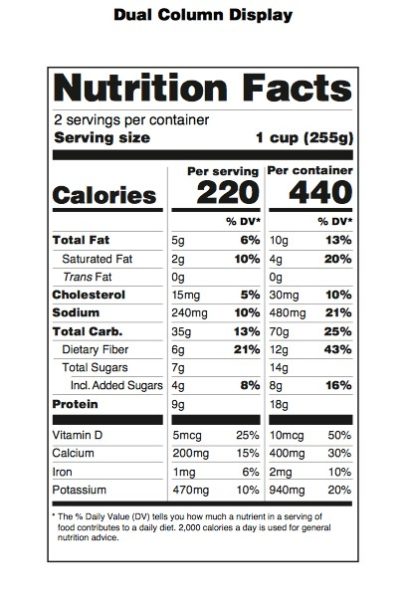


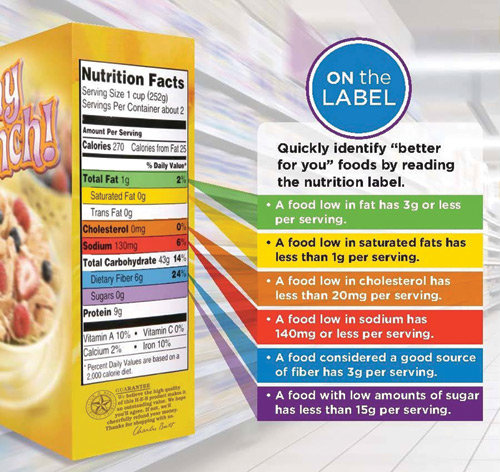




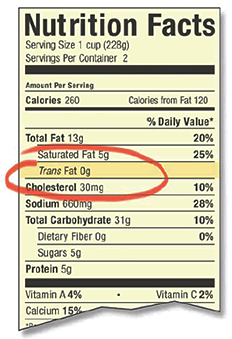
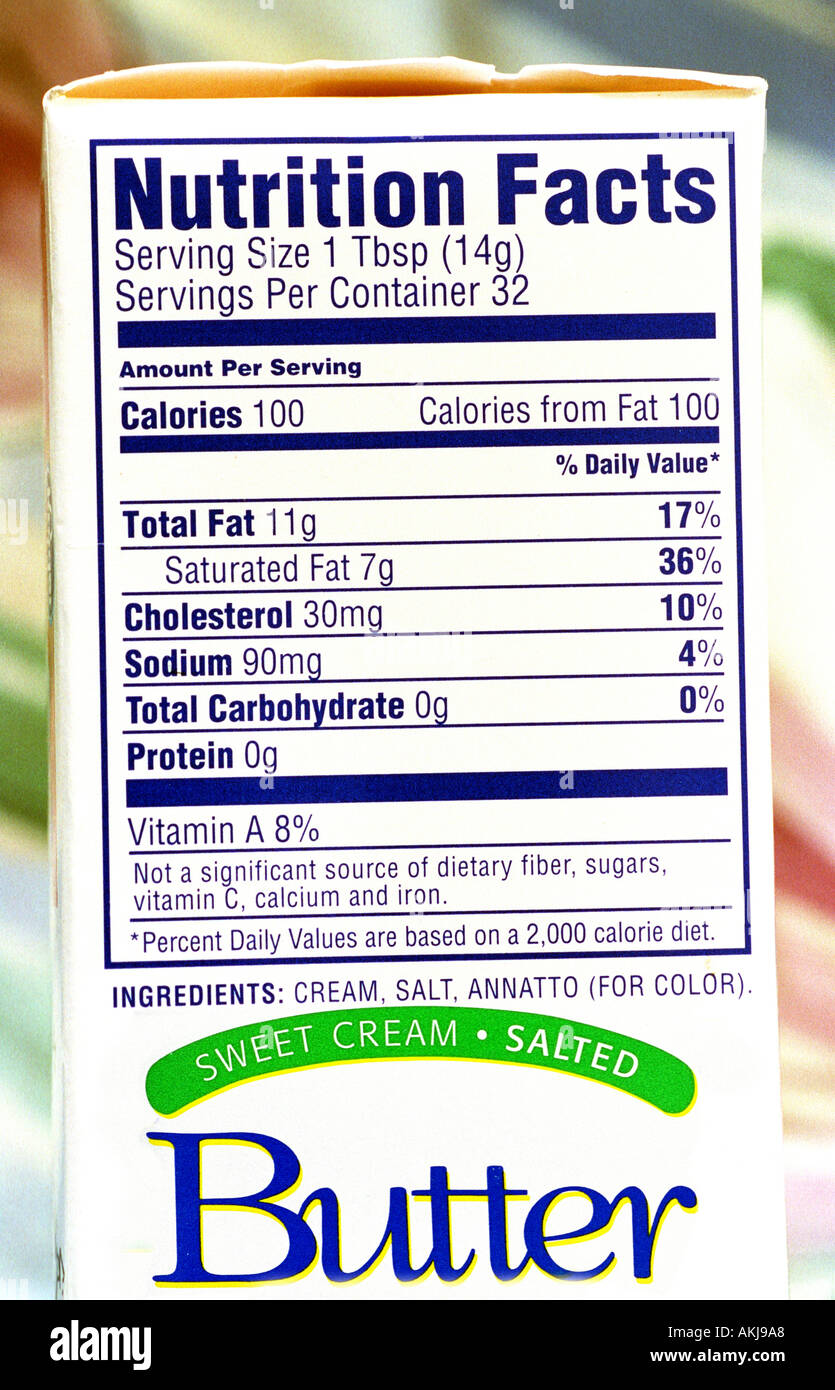
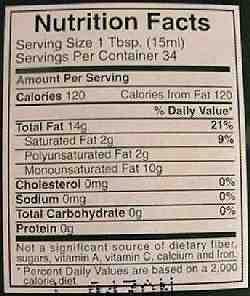




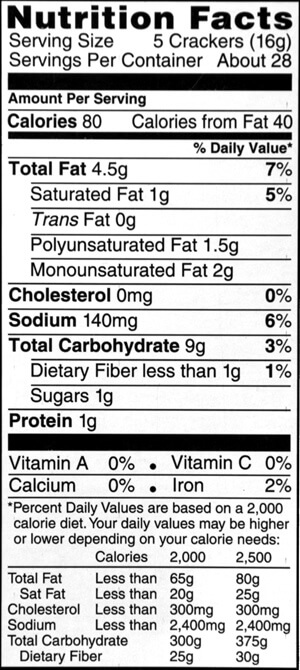

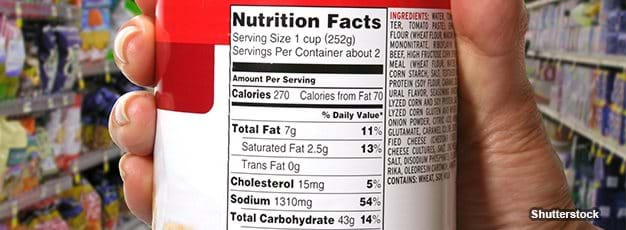



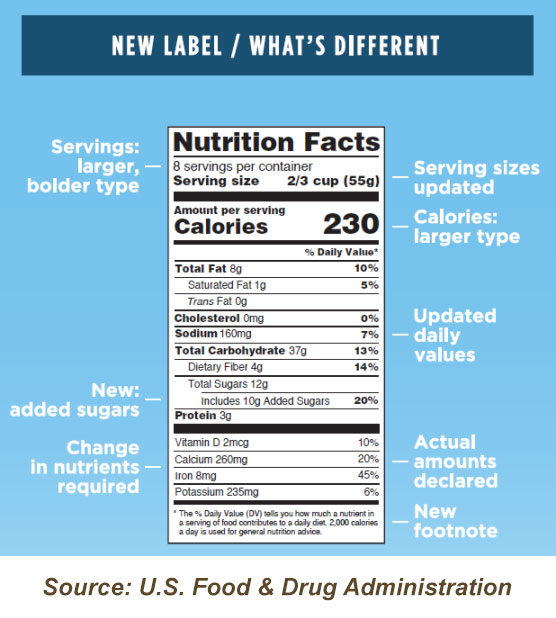
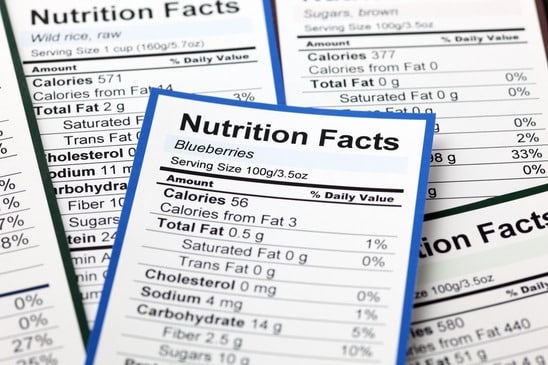






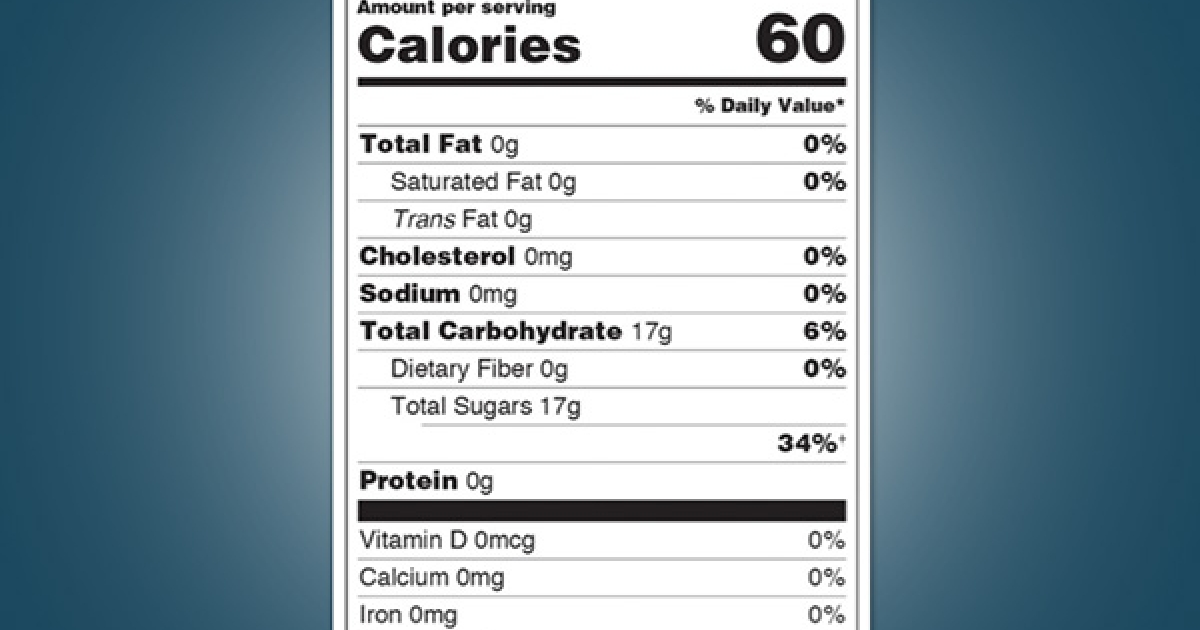

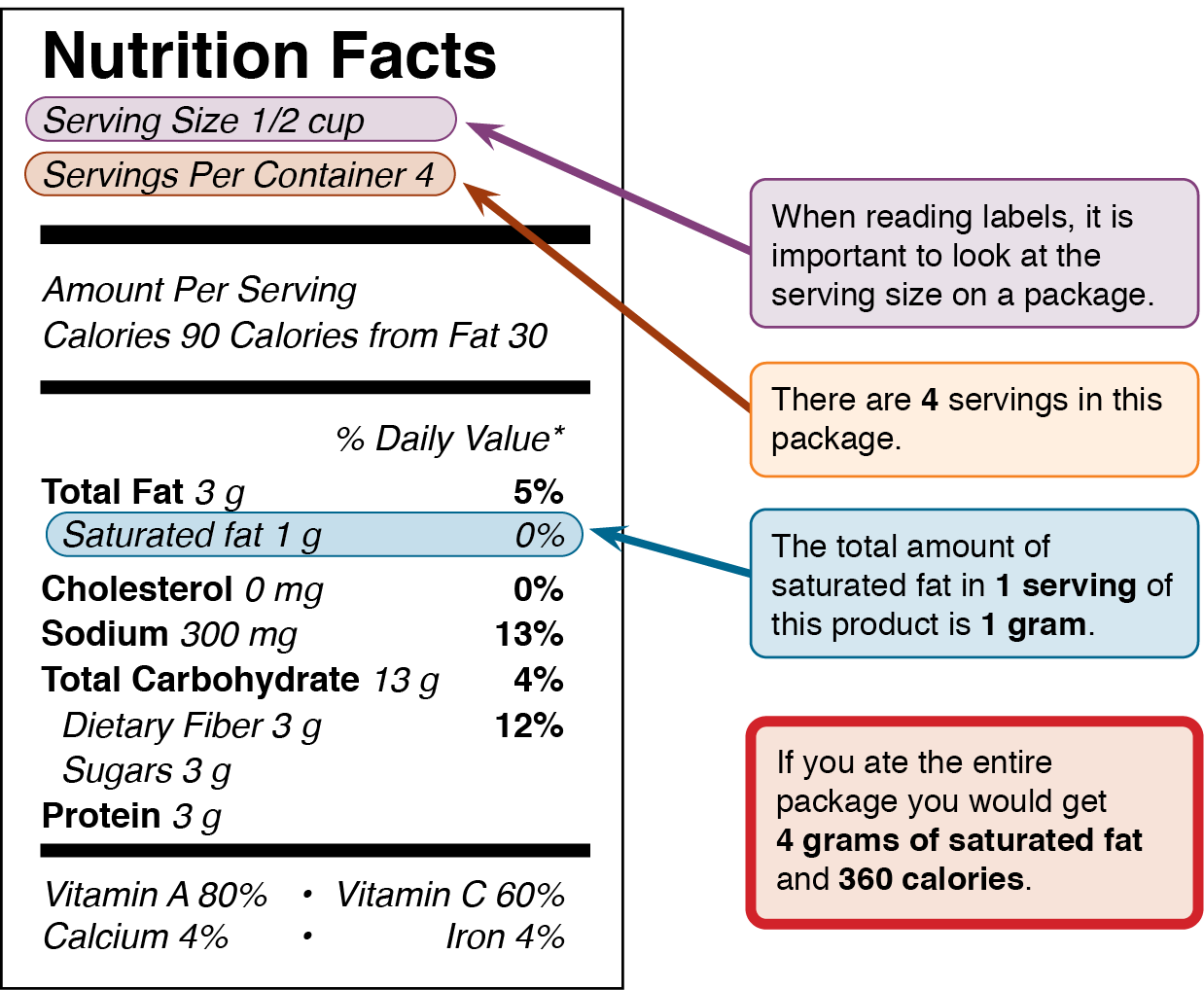

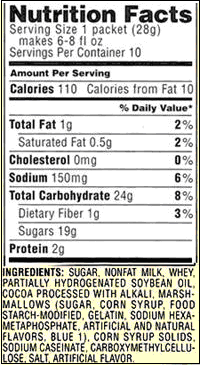
Post a Comment for "43 saturated fat on food labels"